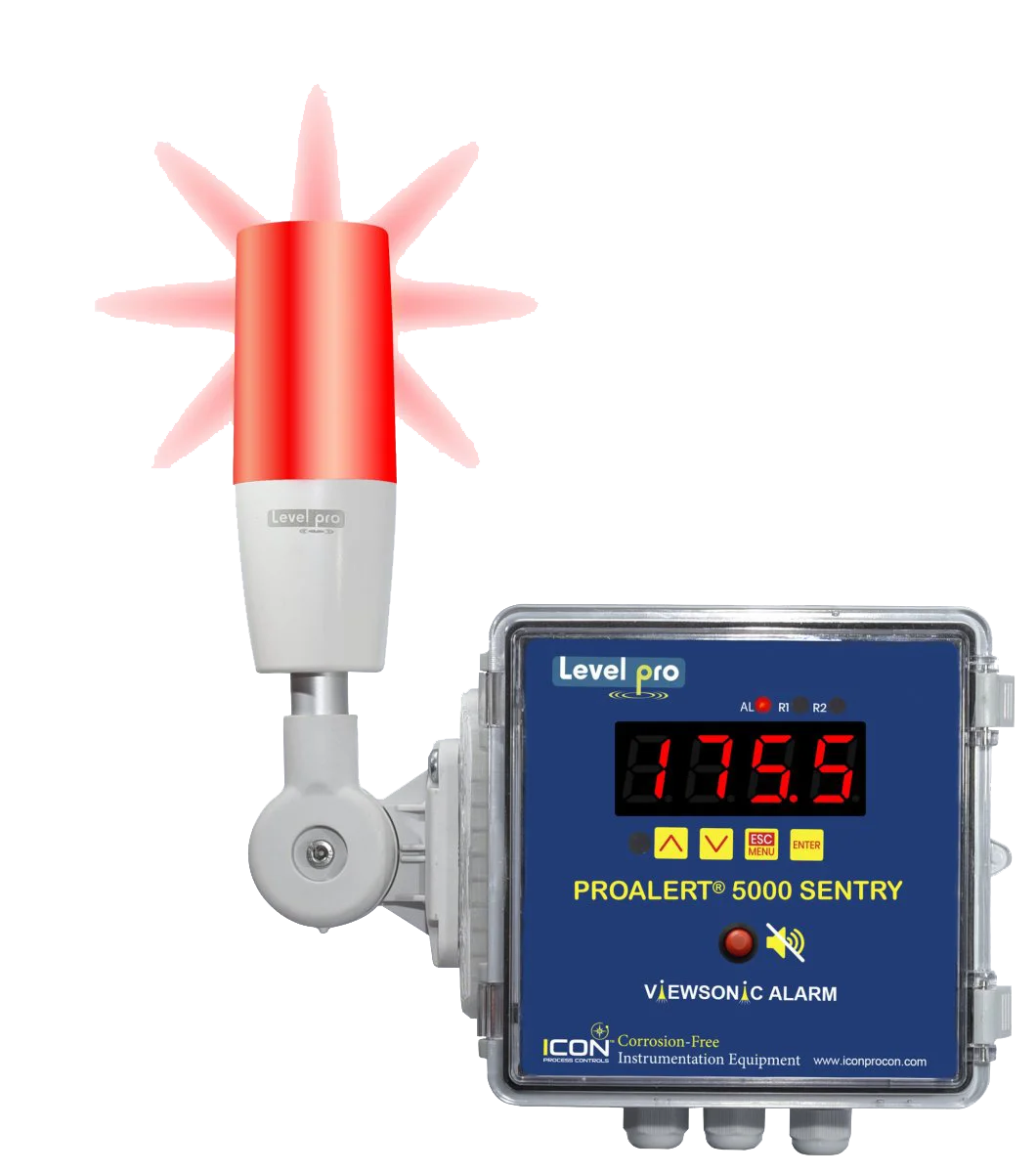Straight Talk on High Level Tank Alarms

A high-level alarm on a tank is a device or system that is used to alert operators or control systems when the level of fluid in the tank reaches a pre-determined high level. High-level alarms are typically used to prevent overfilling of tanks and potential spills or leaks that could cause damage or safety hazards.
There are several types of high-level alarms available for tanks, including:
- Mechanical float switches: These devices use a float that is attached to a switch. As the level of fluid in the tank rises, the float also rises and activates the switch, which triggers the alarm.
- Electro-mechanical level switches: These devices use a probe that is inserted into the tank. As the level of fluid in the tank rises, the probe makes contact with the fluid and activates the switch, which triggers the alarm.
- A submersible level sensor is a type of level sensor that is designed to be submerged in the liquid being measured. It is commonly used in tanks or other containers that are not easily accessible, such as wells, boreholes, and deep tanks.
- Ultrasonic level sensors: These sensors use ultrasonic sound waves to measure the distance to the surface of the fluid. As the level of fluid in the tank rises, the sensor sends a signal to the alarm, which triggers the alarm.
- Radar level sensors: These sensors use radar technology to measure the distance to the surface of the fluid. As the level of fluid in the tank rises, the sensor sends a signal to the alarm, which triggers the alarm.
- Capacitance level sensors: These sensors use capacitance measurement principle to measure the level of fluid in the tank. As the level of fluid in the tank rises, the sensor sends a signal to the alarm, which triggers the alarm.
It is important to note that high-level alarms should be regularly tested to ensure they are working.
Learn more about tank level sensors
Learn more about tank level alarms
Please contact us to discuss your application


